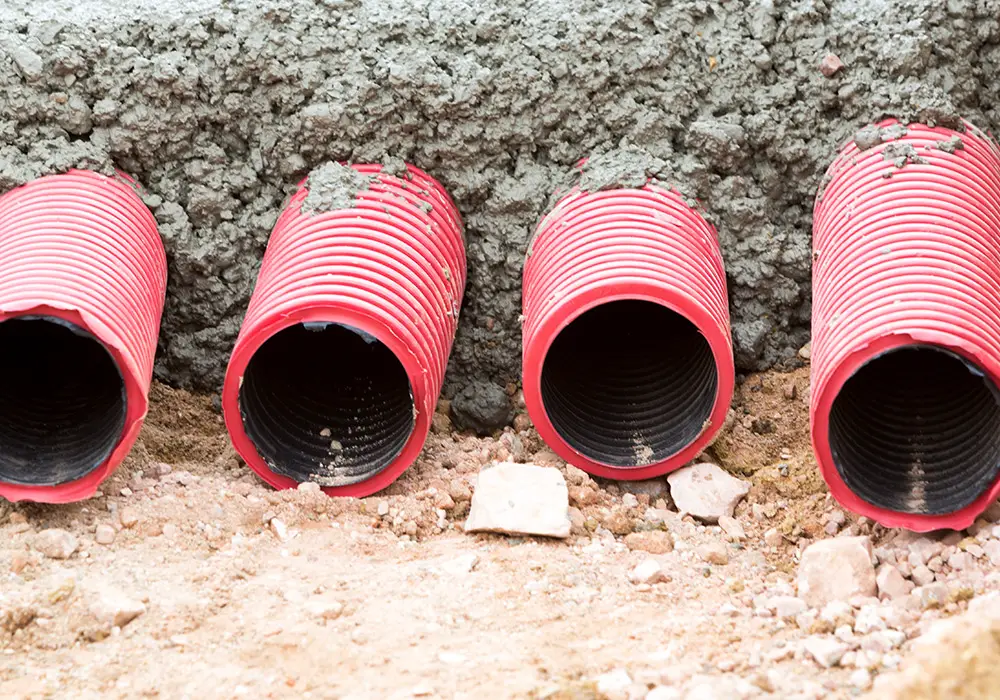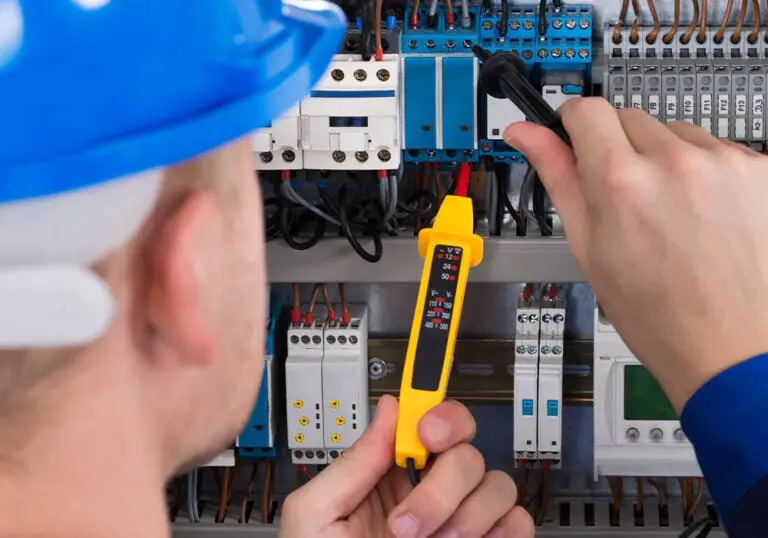What to Do with Ground Wires If There is No Ground Terminal
Understanding the importance of ground wires in electrical systems is essential for ensuring safety and preventing accidents in residential and commercial settings. Ground wires serve as a path to redirect excess electrical current back to the earth, thus preventing potential shock or damaging electrical appliances. However, in some situations, you may find yourself faced with a ground wire and no ground terminal to connect it to.
Various scenarios might lead you to encounter a situation where no ground terminal is available, including working with older electrical systems, retrofitting a new appliance, or installing a light fixture. Knowing how to adapt and properly ground a wire in these situations is key to maintaining a safe electrical system within your home or workplace.
Key Takeaways
- Ground wires play a crucial role in preventing electrical accidents and protecting appliances
- Adapting existing ground wires or using alternative grounding techniques are options when no ground terminal is available
- Consult a professional electrician for guidance in grounding without a ground terminal and adhering to government regulations
Understanding Ground Wires
Ground wires play a crucial role in ensuring electrical safety in your home. They serve as a safe path for electricity to travel back to the ground in case of a fault or short circuit. This helps to prevent electrical shocks and damage to your appliances.
The ground wire is typically a green or bare copper wire and is connected to the electrical devices, metal housings, and grounding electrodes in your home. This establishes a connection to the earth, providing a solid foundation for your electrical system.

In older homes, you may find electrical outlets and switches with only two wires present, indicating that there is no ground wire. This type of wiring are referred to as ungrounded and pose a risk for electrical shocks or malfunctions, as there is no safe path for faulty electrical currents to be redirected.
When faced with the situation of having no ground terminal, it is essential to take proper safety measures. These may include updating the electrical system to meet current standards, installing a ground-fault circuit interrupter (GFCI) which can help protect against electrical shocks, or having a professional electrician assess your home’s wiring and grounding needs.
Remember, electrical safety is of the utmost importance. If you are unsure of how to properly manage ground wires or if you don’t have a ground terminal, consult a qualified electrician to ensure a safe and effective solution.
Scenarios When No Ground Terminal is Available
There are times when working on electrical systems or devices where a ground terminal might not be readily available. Understanding how to handle these situations is essential to maintaining both safety and functionality. Here are a few scenarios where a ground terminal might be absent and some guidance on how to proceed.
Older Electrical Systems
In older homes or buildings, the electrical systems may not have been designed with a ground wire or ground terminal. In these cases, it’s important to consider upgrading your electrical system to include proper grounding for safety purposes. You could also use a Ground Fault Circuit Interrupter (GFCI) outlet or adapter, which provides protection without requiring a ground wire connection.
Home Appliances and Electronics
Some devices, like home appliances and electronics, might not come with a ground wire or have a two-pronged plug instead of a three-pronged version. If the device has a polarised plug, with one prong wider than the other, it has a basic level of built-in safety. However, if possible, consider replacing the two-pronged plug with a grounded three-pronged plug and connecting it to a grounded outlet to enhance safety.
Automotive and Portable Equipment
In some situations, you might encounter ground wires while working on automotive or portable equipment where no appropriate ground connection is nearby. In these instances, it’s essential to find a suitable metal part to connect the ground wire to, ensuring that it is clean and free from corrosion.
Through understanding these scenarios and taking appropriate measures, you can maintain safe and functional electrical connections even when a ground terminal is not available. Remember to always consult a qualified electrician if you’re unsure about the proper steps to take.
Adapting Existing Ground Wires
When dealing with ground wires and a lack of ground terminals, it’s essential to find suitable alternatives to ensure safety and proper electrical grounding. Remember, never cut off or leave a ground wire unconnected.
One solution is to use wire connectors. Attach the ground wire to a wire connector, which can easily be screwed onto an existing grounding point, such as a metal junction box or ground bus bar in your electrical panel. This will ensure a proper and secure connection.
If you’re working with wall outlets or light switches where no grounding point is available, you might need to consult a professional electrician. In some cases, rewiring might be necessary to implement an appropriate grounding mechanism to avoid potential electrical hazards.
Moreover, for vehicles or machinery, ensure that the ground wire connects to a bare metal part of the equipment’s body, engine, or chassis. It’s crucial to maintain a secure and clean contact to avoid potential grounding issues.
In scenarios where multiple circuits share a ground wire, always verify that the ground wire is of an adequate gauge and thickness. For instance, a 12 AWG ground wire is suitable for a 14 AWG/15A outlet circuit but not for a 10 AWG/30A dryer circuit.
If you’re unsure about installing a ground wire or adapting the existing configuration, it’s always a good idea to consult an expert or seek professional help. Doing so will ensure that you’re taking the necessary precautions when dealing with electrical systems.
Techniques for Grounding Without Ground Terminal
When you encounter a situation with no ground terminal, it’s important to know how to properly ground the electrical system. Here are a few techniques to safely ground wires without a designated ground terminal:
1. Utilise a Grounding Screw: If there is an electrical box without a grounding terminal, you can attach the ground wire to a green grounding screw. After securing the screw into the electrical box, wrap the ground wire tightly around it to create a secure connection.
2. Connect to a Bare Metal Surface: In situations where a grounding terminal is nonexistent, identifying a clean, secure, rust-free, and corrosion-free bare metal surface is key. Ensure that the chosen spot has low resistance (below 0.2 volts) before connecting the ground wire to it. This option is especially useful for grounding car electrical systems.
3. Install a GFCI Receptacle: Another solution is to replace the existing outlet with a ground-fault circuit interrupter (GFCI) receptacle. Although a GFCI receptacle doesn’t provide grounding for appliances, it offers shock protection by tripping the flow of electricity during ground-fault conditions. Remember to label the receptacle or cover plate as having no equipment ground.
4. Bonding the Ground Wire: In cases where an ungrounded fixture or box is present, bonding the ground wire can provide a proper grounding solution. Connect the ground wire to the metallic surface of the fixture or box to establish a grounding path.
By employing these techniques, you can effectively ground electrical systems even when there is no designated ground terminal. This ensures both safety and correct functionality for your appliances and overall electrical system.
Using an Adaptor Plug
When you encounter a situation where there is no ground terminal available, one solution is to use an adaptor plug. Adaptor plugs are designed to connect your grounded devices to ungrounded outlets. These plugs usually have a three-prong outlet on one end and a two-prong plug on the other. To use an adaptor plug, simply plug your device’s three-prong plug into the adaptor and then plug the adaptor into the outlet.
It’s important to note that using an adaptor plug should be considered a temporary solution. While it can provide a means to connect your device to an ungrounded outlet, it doesn’t offer the same level of protection as a properly grounded outlet. In some cases, this could result in increased risk of electric shock or damage to your device.
To maximise the safety and effectiveness of the adaptor plug, it’s essential to ensure that the metal grounding tab or prong on the adaptor is connected to a grounded surface. One way to do this is by attaching the metal grounding tab to the cover-plate screw of the outlet, which can provide a ground path from the outlet to the metal box and conduit leading back to the service panel.
Keep in mind that using an adaptor plug may not be an option in all situations. Certain appliances or electrical systems may require a proper ground connection for proper operation or to meet safety standards. In these cases, it is important to consult with a licensed electrician to determine the best course of action.
To summarise, using an adaptor plug can be a helpful temporary solution when dealing with a missing ground terminal. However, it’s important to acknowledge the potential risks and limitations of this approach and to seek professional advice when necessary.
Consulting a Professional Electrician
When dealing with ground wires and a lack of ground terminal, it’s crucial to consult a professional electrician. A qualified electrician can assess the situation, determine the best course of action, and ensure that the electrical installation is safe and up to code. They have the expertise and experience required to deal with such complexities and can prevent potential hazards that can arise from improper handling of ground wires.
In many cases, old wiring systems may not include a ground wire as they were not required in some older installations. However, modern electrical codes require grounding for additional safety and protection. If you’re unsure about the existing setup in your home, it’s best to consult with an electrician who can identify any issues and recommend necessary upgrades.
One option an electrician might suggest is retrofitting your wiring system to include a proper ground wire connection. This could involve installing grounding conductors to metal boxes, adding ground fault circuit interrupter (GFCI) devices, or completely rewiring particular circuits to include a ground wire.
Another consideration is the type of materials used in your light fixtures or outlets. If they are made of non-conductive materials such as plastic, there is no need to connect a ground wire. In this case, a professional electrician can confirm the suitability of your fixtures and advise you if any changes are necessary.
Remember, electrical work can be dangerous if not done correctly. Relying on a professional electrician’s guidance ensures that you meet current safety standards and minimises the risk of electrical accidents or damage to your property.
Potential Risks and Safety Measures
When dealing with ground wires in the absence of a ground terminal, it is crucial to understand the potential risks and implement appropriate safety measures. This is to ensure that you, as well as others around, remain protected from any hazards associated with electrical wiring.
One of the main risks of not having a ground terminal is the possibility of electrical shock. Ungrounded electrical systems may lead to a buildup of voltage, which can cause serious harm if touched. Additionally, improper grounding can result in damage to electrical devices and appliances, leading to costly repairs or replacements.
To mitigate these risks and maintain a safe environment, consider the following safety measures:
- Use twist-on wire connectors: These are inexpensive and effective tools that can be used to secure the edge of the ground wire. Simply twist them onto the wire to keep it in place.
- Coil up the ground wire: Once the wire is secured with a connector, coil it up neatly. You may use a string or electrical tape to keep it coiled and organised.
- Follow safe digging practices: If you’re working near underground electrical cables, be sure to familiarise yourself with HSE guidance on avoiding danger from underground services. This includes using cable plans, cable locating devices, and implementing appropriate safety measures.
- Adopt safety measures for overhead power lines: If you’re working in proximity to overhead power lines, follow HSE recommendations on avoiding danger from them. Do not rely solely on gloves or rubber boots for protection, as damp or dirty materials may not effectively insulate against electrical shocks.
By following these practical and straightforward safety measures, you can effectively reduce the risks associated with ground wires in the absence of a ground terminal. It is essential to stay aware of your surroundings and prioritise safety at all times when dealing with electrical systems in any capacity.
Ground Wire Maintenance Tips
To ensure the safety and proper functioning of your electrical system, it’s vital to maintain your ground wires. Here are a few ground wire maintenance tips to keep in mind:
- Check for proper grounding: Regularly inspect your electrical system to ensure that all ground wires are connected to a suitable grounding point. If you discover a ground wire without a terminal, it’s crucial to find an appropriate connection point. Choose a clean, secure, non-painted, rust-free, and corrosion-free metal spot with low resistance (below 0.2 volts).
- Use wire connectors: When connecting ground wires, use suitable wire connectors that securely fasten the wires together. These connectors ensure proper electrical contact and reduce the risk of disconnection due to vibrations or wear.
- Never cut the ground wire off: Cutting off the ground wire can lead to potentially hazardous situations, including a higher risk of electrical shock. If you encounter a ground wire without a terminal, find a suitable connection or consult a professional electrician.
- Inspect for damage: Periodically examine your ground wires for signs of damage or wear, such as frayed insulation, loose connections, or corrosion. If you find any issues, promptly address them to minimise the risk of electrical problems.
- Familiarise yourself with your electrical system: Get acquainted with your electrical system’s components, including the locations of all ground wires. This understanding will help you easily address grounding issues and maintain your system effectively.
By following these ground wire maintenance tips, you can protect your electrical system and ensure the safety of your home or workplace. Remember, any doubt or confusion should be addressed by consulting a qualified electrician.
Government Regulations on Ground Wires
Electrical safety is a top priority for any installation, and proper grounding plays a crucial role. In the UK, government regulations and standards ensure the safety of both people and property in electrical installations. By adhering to these regulations, you can manage the use of ground wires when there isn’t an available ground terminal.
The BS 7671 – the UK’s national standard for electrical installations – encompasses the requirements for electrical grounding. These regulations provide guidance on the minimum safety standards needed to protect installations, equipment, and people from electrical hazards.
When a ground terminal is not available, follow these guidelines:
- Establish a grounding point: Identify a viable and safe grounding point. This could be a nearby metal structure or grounding electrode in the ground. Ensure the grounding point has adequate contact with the earth to handle fault currents.
- Bonding: Connecting all metal-clad electrical components to a common ground using grounding conductors helps to form a low impedance path back to the grounding point.
- Protective earthing: Use protective devices like residual current devices (RCDs), which quickly disconnect power when they detect an imbalance between the live and neutral conductors. This protects against electric shock, faults, and fire risks.
Always consult a qualified electrician when handling grounding solutions in the absence of ground terminals. Following the guidance from the BS 7671 standard may reduce electrical risks to you and your property and ensure compliance with government regulations on ground wires.



